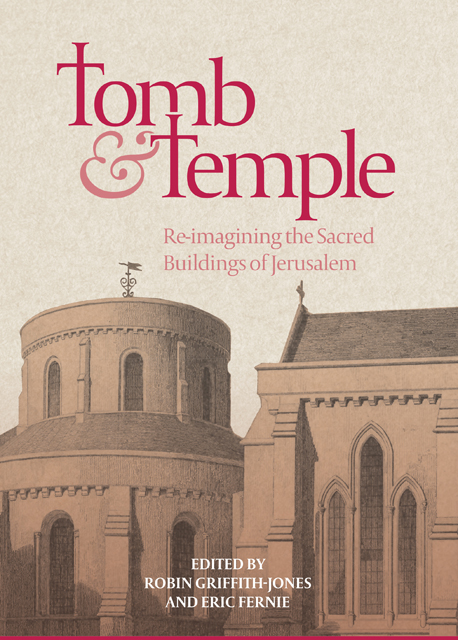Book contents
- Frontmatter
- Contents
- Illustrations
- Preface
- Contributors
- Abbreviations
- Editors’ Note
- Introduction
- Part I Re-presenting Jerusalem
- Part II The Church of the Holy Sepulchre
- Part III The Noble Sanctuary / The Temple Mount
- Part IV The Orthodox Churches
- Part V Round Churches in the West
- Appendix: The Knights’ Effigies: Newly Discovered Drawings by John Guillim, c. 1610
- Epilogue
- Index
- Already Published
4 - The Crusader Church of the Holy Sepulchre: Design, Depiction and the Pilgrim Church of Compostela
Published online by Cambridge University Press: 17 January 2023
- Frontmatter
- Contents
- Illustrations
- Preface
- Contributors
- Abbreviations
- Editors’ Note
- Introduction
- Part I Re-presenting Jerusalem
- Part II The Church of the Holy Sepulchre
- Part III The Noble Sanctuary / The Temple Mount
- Part IV The Orthodox Churches
- Part V Round Churches in the West
- Appendix: The Knights’ Effigies: Newly Discovered Drawings by John Guillim, c. 1610
- Epilogue
- Index
- Already Published
Summary
Multicultural Jerusalem
When the First Crusade conquered Jerusalem on 15 July 1099, the Church of the Holy Sepulchre (CHS) that the crusaders found was the one which the Byzantines had rebuilt in the 1040s. The large nave of Constantine’s basilica was gone. In the Byzantines’ configuration the rotunda over the aedicule had become the main space, with an apse to the east, and outside on the eastern side there was the Triporticus, a courtyard with three chapels. The Triporticus was entered from the parvis to the south. The crusaders eventually renovated and expanded this church, and it is aspects of this new crusader CHS that I would like to revisit here.
It would be more than thirty years before the king and queen of the Latin kingdom and the Latin patriarch of Jerusalem began planning substantial changes to the CHS itself, but in the meantime crusaders in the Holy Land had undergone a serious change of world-view. By the 1120s the crusaders had fully established themselves in the Latin kingdom of Jerusalem, and as residents the second generation of Franks now had a new perspective on the Holy Land. Around 1127 the crusaders’ new situation in the Holy Land was reported by Fulcher of Chartres, chaplain to King Baldwin II, in his Historia Hierosolymitana [ch. 37]. He writes:
Consider, I pray, and reflect how in our time God has transformed the Occident into the Orient. For we who were Occidentals have now become Orientals. He who was a Roman or a Frank has in this land been made into a Galilean or a Palestinian. He who was of Rheims or Chartres has now become a citizen of Tyre or Antioch. We have already forgotten the places of our birth … Some have taken wives not only of their own people but Syrians or Armenians or even Saracens who have obtained the grace of baptism … People use the eloquence and idioms of diverse languages in conversing back and forth. Words of different languages have become common property known to each nationality and mutual faith unites those who are ignorant of their descent.
- Type
- Chapter
- Information
- Tomb and TempleRe-imagining the Sacred Buildings of Jerusalem, pp. 95 - 120Publisher: Boydell & BrewerPrint publication year: 2018

